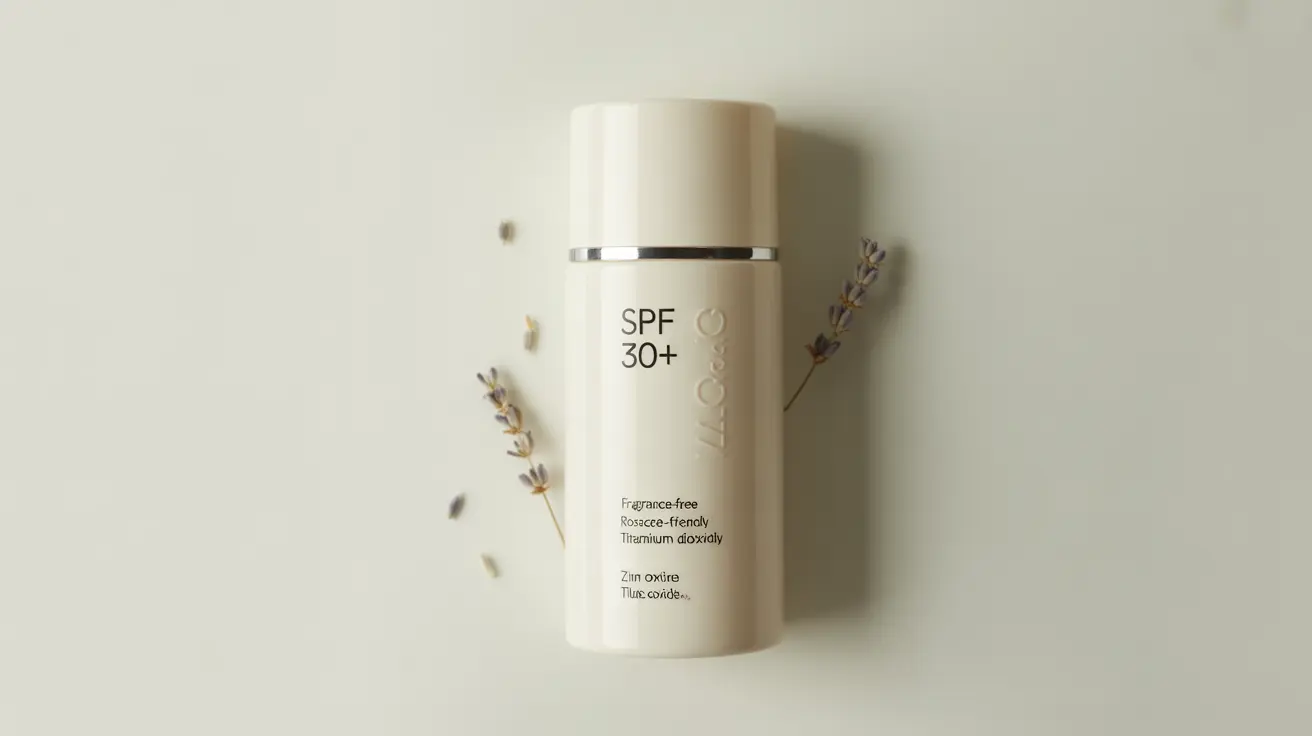For individuals living with rosacea, choosing the right sunscreen isn't just about preventing sunburn—it's a crucial step in managing this chronic skin condition. Sun exposure is one of the most common triggers for rosacea flare-ups, making proper sun protection essential for maintaining healthy skin.
Understanding how to select and use the right sunscreen can make a significant difference in managing rosacea symptoms and preventing uncomfortable flare-ups. Let's explore the most effective options and essential considerations for protecting rosacea-prone skin.
Understanding Why Sunscreen Matters for Rosacea
UV radiation can trigger inflammation and worsen rosacea symptoms, leading to increased redness, visible blood vessels, and painful bumps. Regular sunscreen use helps create a protective barrier between your sensitive skin and harmful UV rays, reducing the risk of flare-ups and long-term skin damage.
Mineral vs. Chemical Sunscreens for Rosacea
When it comes to rosacea-prone skin, mineral (physical) sunscreens typically offer better protection with less risk of irritation compared to chemical alternatives. These sunscreens create a physical barrier on the skin's surface rather than being absorbed into it.
Benefits of Mineral Sunscreens
- Gentle on sensitive skin
- Immediate protection upon application
- Less likely to cause irritation
- Often contain soothing ingredients
- Better for heat-sensitive rosacea
Key Ingredients to Look For
The most effective sunscreens for rosacea typically contain these beneficial ingredients:
- Zinc oxide
- Titanium dioxide
- Niacinamide
- Green tea extract
- Aloe vera
- Ceramides
Essential Features of Rosacea-Friendly Sunscreens
When selecting a sunscreen for rosacea-prone skin, look for products that are:
- Fragrance-free
- Broad-spectrum (UVA/UVB protection)
- SPF 30 or higher
- Non-comedogenic
- Oil-free
- Alcohol-free
Proper Application Techniques
To maximize protection and minimize irritation, follow these application guidelines:
- Apply sunscreen 15-30 minutes before sun exposure
- Use approximately 1/4 teaspoon for the face
- Reapply every 2 hours or after swimming/sweating
- Apply even on cloudy days or when indoors
Additional Sun Protection Strategies
Complement your sunscreen routine with these protective measures:
- Wear wide-brimmed hats
- Seek shade during peak sun hours
- Use UV-protective clothing
- Wear sunglasses to protect the delicate eye area
Frequently Asked Questions
What type of sunscreen is best for sensitive and rosacea-prone skin?
Mineral sunscreens containing zinc oxide or titanium dioxide are best for rosacea-prone skin. These ingredients provide gentle yet effective protection without irritating sensitive skin.
Why should people with rosacea avoid chemical sunscreens and fragrances?
Chemical sunscreens and fragrances can irritate sensitive skin and trigger rosacea flare-ups. These ingredients may cause burning, stinging, and increased redness in rosacea-prone skin.
How often should sunscreen be applied to prevent rosacea flare-ups from sun exposure?
Sunscreen should be applied every 2 hours when outdoors, or more frequently if swimming or sweating. Daily application is essential, even on cloudy days or when spending time indoors.
Can mineral sunscreens with zinc oxide or titanium dioxide help reduce redness caused by rosacea?
Yes, mineral sunscreens with zinc oxide or titanium dioxide can help reduce redness. These ingredients have natural anti-inflammatory properties and can help calm irritated skin while providing sun protection.
What ingredients in sunscreen provide soothing benefits for rosacea-prone skin?
Beneficial ingredients include niacinamide, green tea extract, aloe vera, and ceramides. These components help calm inflammation, strengthen the skin barrier, and provide additional protection against rosacea triggers.
Remember, protecting your skin from the sun is one of the most important steps in managing rosacea. Choose your sunscreen carefully and make it a consistent part of your daily skincare routine.




